Posts Tagged: fruit trees
This BOG in the Heart of UC Davis Is a Treasure
"A bog is a wetland that accumulates peat, a deposit of dead plant material—often mosses, and in a majority of cases, sphagnum...
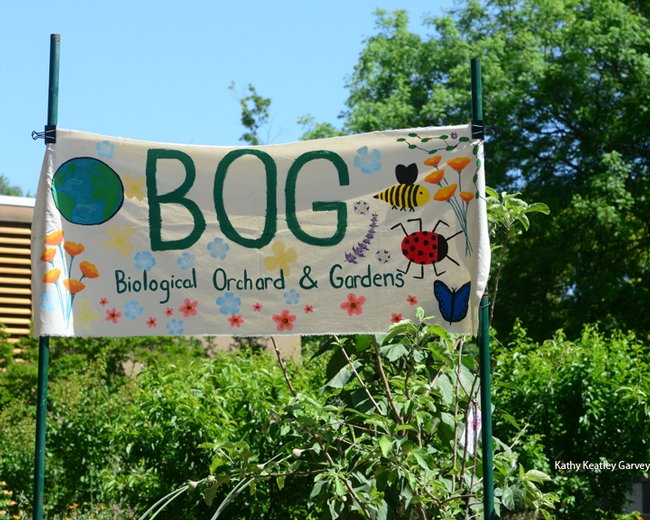
The Biological Orchard and Gardens (BOG) sign features floral and insect designs. It's located by the Mann Laboratory, UC Davis campus. (Photo by Kathy Keatley Garvey)
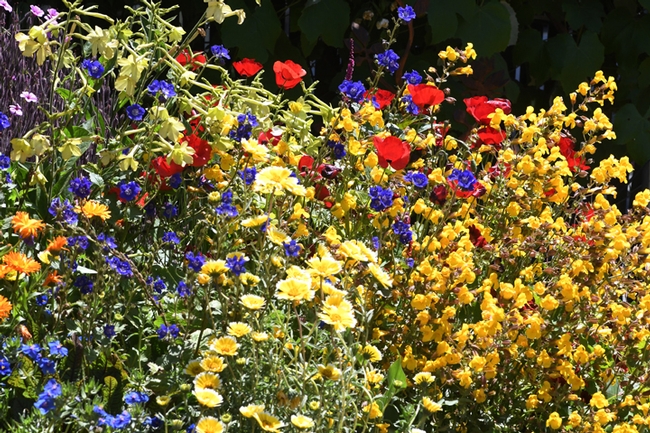
Colorful BOG garden in the early spring: among the flowers are tidy tips, desert bell, and European red flax. (Photo by Kathy Keatley Garvey)
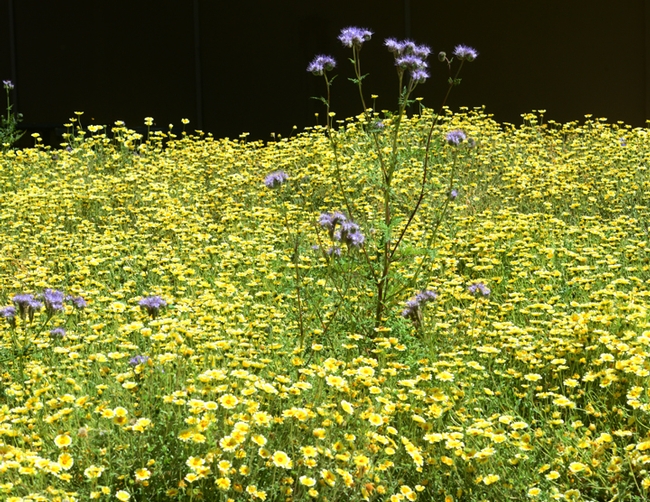
A mini-meadow of tidy tips, Layia platyglossa, with tall phacelia, Phacelia tanacetifolia. (Photo by Kathy Keatley Garvey)
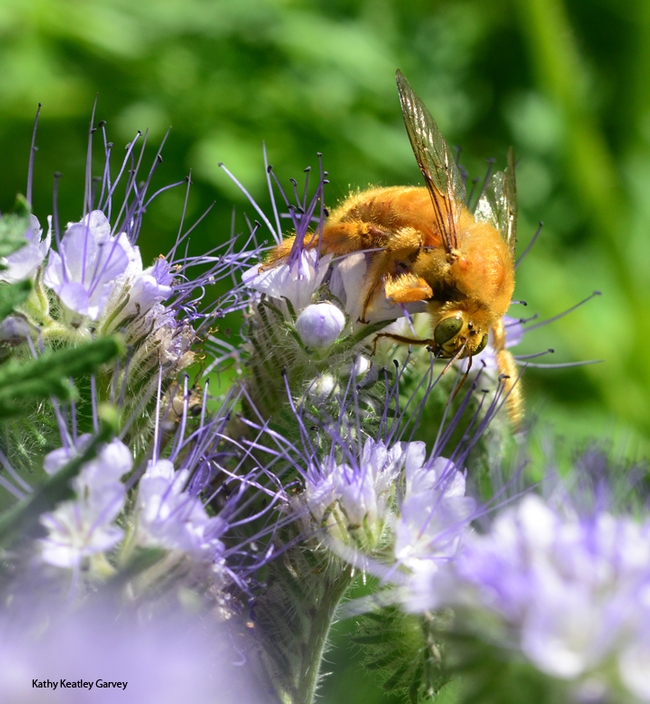
A male Valley carpenter bee, (Xylocopa varipuncta) forages on phacelia. (Photo by Kathy Keatley Garvey)
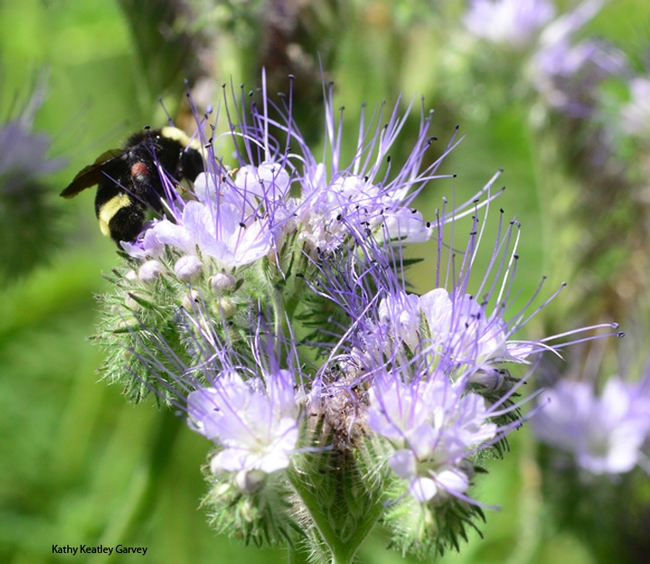
A yellow-faced bumble bee (Bombus vosnesenskii) sips nectar from phacelia. (Photo by Kathy Keatley Garvey)
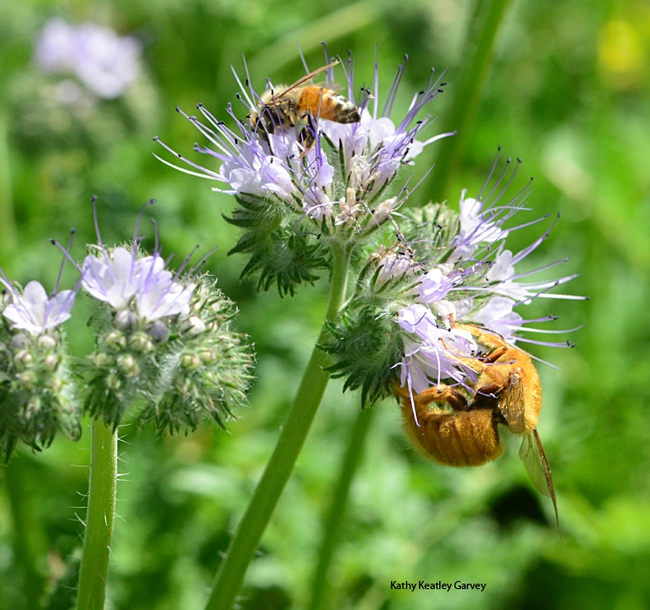
Size comparison! A honey bee is dwarfed by a male Valley carpenter bee, Xylocopa varipuncta. (Photo by Kathy Keatley Garvey)
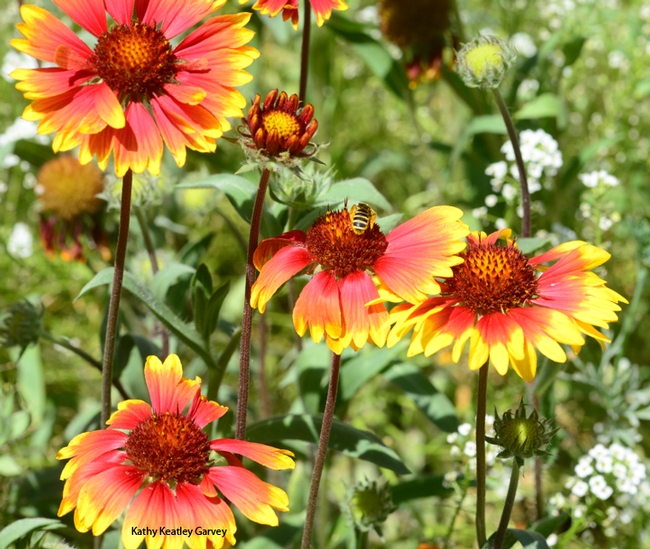
Many species of bees--as well as butterflies and other insects--are drawn to the blanketflower, Gaillardia. (Photo by Kathy Keatley Garvey)
Inter-planting Fruit Trees With Veggies
Yes, you can have it all in a relatively small back yard space: Fruit trees and veggies. Our “mini orchard” is on an oblong plot that’s about 25x15’, a sunny plot that came with the house we bought last summer. In that space there are 3 dwarf plums (Prunus spp.), 2 apricots (P. armeniaca), 3 cherry trees (P. avium), 2 peach trees (P. persica), and an apple (Malus domestica), all of unknown varieties. Our fruit trees are about 5 or 6 year old mostly dwarfs (I think), and if not, they got dwarfed anyway by my pruning saw and loppers last December, when I pruned both for shape and fruit production. My rule of thumb with fruit trees is that if it is higher than I can reach, it gets lopped off. This permits easy picking of the fruit and avoids the need for ladders. The pruning and thinning of the foliage, which I do about once per month (see photos) also allows more nutrients to get to the fruit, besides giving those veggies planted in between their 6-8 hours of sun.
The veggies we have include 6 tomato plants (Solanum lycopersicum) in cages, 2 clumps of squashes (Curcurbita pepo), Japanese eggplant (Solanum melongena), bell peppers (Capsicum annuum), a lemon cucumber (Cucumis sativus), 3 hollyhocks (Alcea setosa), and 2 sunflowers (Helianthus annuus). The tomatoes have been so productive we have to give the surplus to neighbors and friends. The eggplant and peppers have been slower to mature but nonetheless very tasty in stir-fries, especially with added portabella mushrooms (Agaricus bisporus) and fresh chard (Beta vulgaris), the chard grown in one of our raised beds in another location of the yard.
And so, another example of when less (space) is more (more intensively gardened).
UC Davis has a publication called The California Backyard Orchard, which you may find useful for tips on pruning, both in the dormant season in during the spring and summer months. See homeorchard.ucdavis.edu.
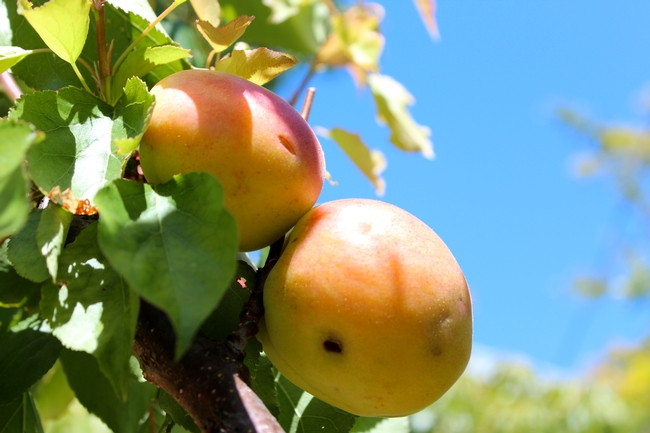
Apricot. (photos by Bud Veliquette)
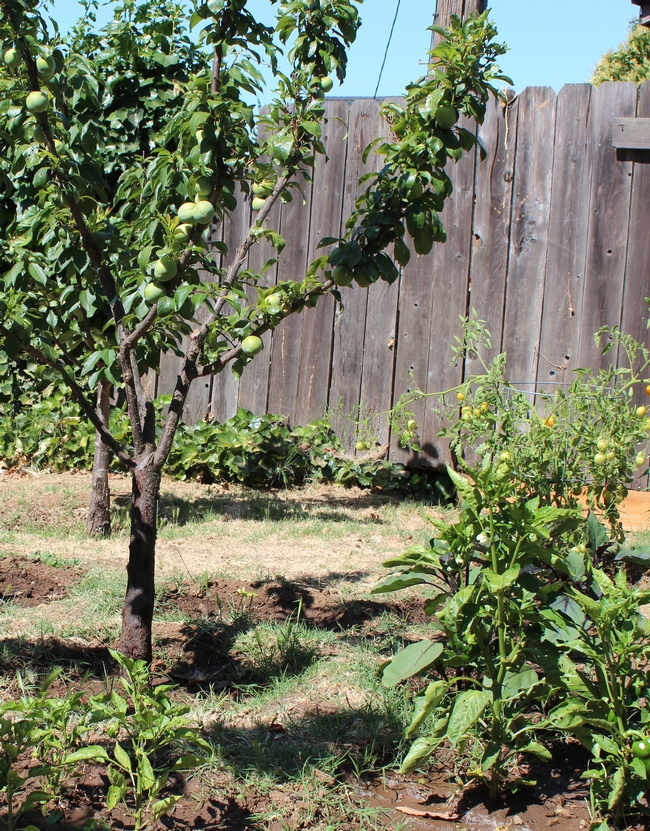
Apple tree, peppers and tomatoes.
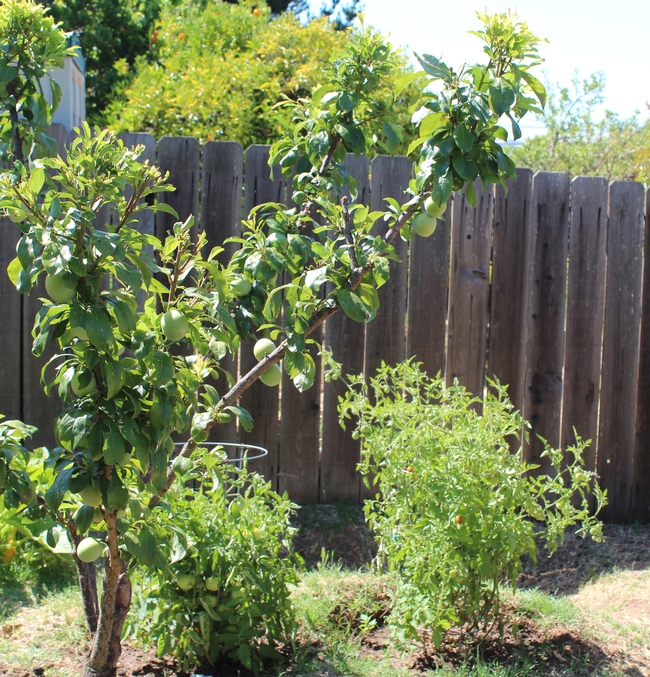
IMG 1082
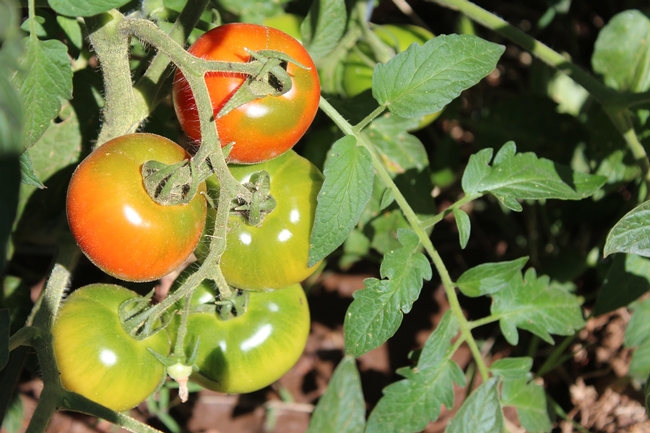
Vine-ripening tomatoes.
Fruit Tree Frenzy Talk
A trip to Annie’s Annuals, in Richmond last month to hear a talk on “Fruit Tree Frenzy” by Phil Pursel of Dave Wilson’s Nursery was very informative to me as well as the many people that were there to hear him.
He talked about pruning and said that pruning is important the first three years of the tree’s life and gave many demonstrations on how to prune different fruit trees. His talk was mainly for the home gardener and how we can make picking the fruit easier when it is ready by correct pruning. His demonstration on pruning included a fig tree, which was pruned to about 3 feet tall from a 6 foot tree; he left very few branches to leaf out, a apricot tree with only the main heading was cut to about 4 feet near where he had an existing bud that would be the way he wanted the tree to grown and a weeping fruitless Santa Rosa plum that was only cut down a couple of feet. It ended up being about 5 feet tall. This weeping Santa Rosa was going to be a wonderful looking tree that I would love to have in my garden. He also pruned a fruit salad tree that was made up of Blenheim apricot, Gold Dust peach, Independence nectarine and a July Elberta peach.
When he pruned the fruit salad tree, he really cut the Blenheim way down, as he said if it was pruned like the rest of the stone fruit, it would take over and this fruit salad tree would end up being a Blenheim apricot tree, if it is not pruned heavily -it is that dominate.
In his opinion if you really want a fruit salad tree, apples are much better than stone fruit for this project.
We learned that when two fruits are combined into one like the Pluots it takes at least 5 years before they are ready for the consumers in the stores. Right now they are working on a Pularie, which is a Santa Rosa plum and a cherry, the name of the cherry he would not develuge . But this fruit is years away yet as they are still in the early testing stage.
Finally home gardeners and urban farmers are encouraged to keep all fruit trees at 6-8- feet tall, this makes easier maintenance and for safer picking of the fruit. He suggested the practical method of pruning to keep a tree less than 12 feet is summer pruning and home gardeners are responsible for the size a tree gets. Water and fertilizer influence tree growth and according to the information from Dave Wilson Nursery, fruit trees do not need a lot of water or nitrogen.

